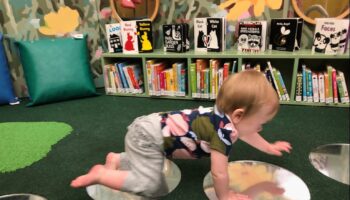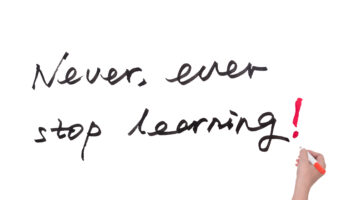Lisa Mulliken
Infants are born ready to communicate. Young infants cry to express their needs and, as they grow and develop, older infants use sounds, facial expressions and gestures to get their message across. Even very young infants engage in back and forth language exchanges with the adults who care for them. As these communication attempts can be easy to miss, it is up to teachers to be aware of and respond to these early conversations as they interact with the children in their care throughout routines and play.
For example, while on a blanket on the floor, an infant coos, waves his arms and kicks with his feet. The teacher, sitting next to the child, then responds by making eye contact, smiling, and tickling the baby’s toes as she repeats the child’s vocalizations. The infant smiles back and the teacher says, “I’m tickling your toes!” The teacher and child continue the interaction with several more back and forth exchanges that include eye contact, facial expressions and the teacher singing Pat-a-Cake as she holds the child’s hands.
These back and forth exchanges are the start of conversation and are crucial for language development. During these interactions, the adult is both the supporter and interpreter of the conversation and encourages the child to communicate through pausing to allow the child a turn to respond verbally or physically. As a child and adult engage in these give and take interactions, the child is learning that communication results in a response and that conversations include give and take. Children are also developing confidence in their communication and learning how to begin an interaction and use words and gestures. Responsive teachers are aware of each individual child’s method of communicating and respond appropriately to provide opportunities for early language interactions.
The link below has a wealth of information on promoting and encouraging language development in young children.
10 Ways to Promote the Language and Communication Skills of Infants and Toddlers




